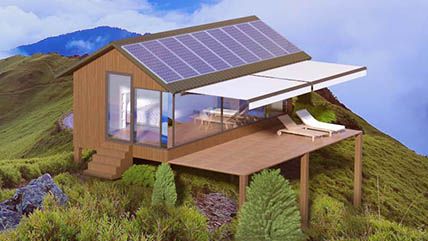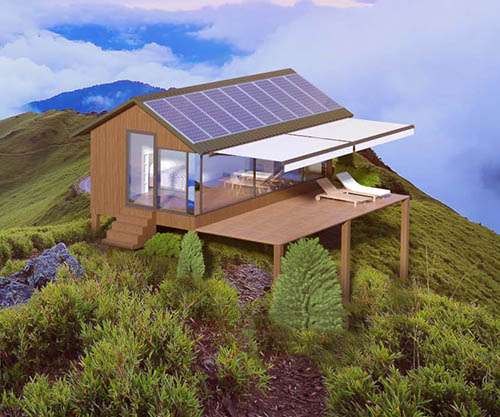ModulOne


A Ukrainian company has unveiled a cheap autonomous mobile house with a 3D-printed frame. The PassivDom modul-One includes solar panels, batteries for power storage, and an inverter, as well as water storage, purification, and independent sewage. The frame is made of carbon fiber, fiberglass, and polyurethane. It claims to be the "warmest house in the world" thanks to new thermal tech, and the entire structure is recyclable.
The whole shebang sells for $65,000. So far, only one model seems to exist, but the company claims potential buyers will be able to test drive the unit soon.
If you're shopping for new digs with disaster in mind, the firm offers a "Zombie apocalypse" package, which includes armored glazing on the structure's extensive transparent walls, a perimeter alarm, extra storage for toilet paper, and a "gift-edition" Bible.
Another set of upgrades, the "not in my backyard" package, includes extensive insurance coverage, an alarm system, and the rather whimsical addition of "a replica of a Kalashnikov."
This article originally appeared in print under the headline "modulOne."
Editor's Note: As of February 29, 2024, commenting privileges on reason.com posts are limited to Reason Plus subscribers. Past commenters are grandfathered in for a temporary period. Subscribe here to preserve your ability to comment. Your Reason Plus subscription also gives you an ad-free version of reason.com, along with full access to the digital edition and archives of Reason magazine. We request that comments be civil and on-topic. We do not moderate or assume any responsibility for comments, which are owned by the readers who post them. Comments do not represent the views of reason.com or Reason Foundation. We reserve the right to delete any comment and ban commenters for any reason at any time. Comments may only be edited within 5 minutes of posting. Report abuses.
Please to post comments


A Ukrainian company has unveiled a cheap autonomous mobile house with a 3D-printed frame...
The frame is made of carbon fiber, fiberglass, and polyurethane.
Uhh...so why have a frame that is '3D printed' when:
A) You probably don't have a 3D printer that could print the frame.
B) You can't 3D print the rest of the house.
C) Objects printed in 3D, generally speaking, have shitty structural integrity.
I could see them getting around issue C with their component material, maybe, but...I just don't see the point of them including this little gem when the only benefits of 3D printing I can think of off-hand is the ease of transmitting the plans to a place without construction apparatus but, since this uses things like solar panels and high-tech materials, that seems counter-intuitive.
this is awesome feature.
https://bit.ly/2GSNQ6V